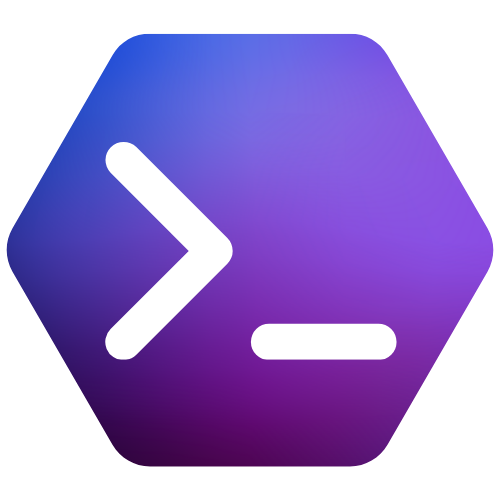Contributing Guide
Learn how to contribute prompts, project rules, and custom agent configurations to help the Amazon Q Developer community
Table of Contents
Contributing Guide
Thank you for considering contributing to Promptz! This guide will help you contribute prompts, project rules, and custom agent configurations to help the Amazon Q Developer community.
Quick Start
- Fork the repository on GitHub
- Choose your content type: Prompts, Project Rules, or Custom Agents
- Use the appropriate templates from the
templates/directory - Follow the content guidelines below
- Submit a pull request
For Agents: Use the page bundle structure with separate template files For Prompts & Rules: Use single template files as before
Contributing Prompts
Prompts are AI instructions that help developers accomplish specific tasks with Amazon Q Developer.
Directory Structure
Place your prompt in the appropriate category:
analysis/- Code review, security analysis, optimizationarchitecture/- System design, diagrams, architectural blueprintsaws/- AWS-specific infrastructure and servicescode-generation/- Code scaffolding, boilerplate generationdocumentation/- ADRs, specifications, project documentationgeneral/- Miscellaneous utilities and toolspersona/- AI behavior and role-setting promptsscaffolding/- Project setup, environment configurationsolutions/- Complete applications and end-to-end solutionsspec-driven-development/- Specification creation and planningtesting/- Unit tests, test generation, QA processes
Creating a Prompt
Copy the template:
1cp templates/prompt-template.md content/prompts/CATEGORY/your-prompt-name.mdFill out the frontmatter:
1 2 3 4 5 6 7 8 9 10 11 12 13 14 15 16--- categories: - category-name # Choose from the directories above description: Brief description of what this prompt does draft: false featured: false howToUse: | Instructions on how to use this prompt effectively. Include specific steps and context where it works best. images: [] tags: - CLI - Chat - IDE title: Your Prompt Title ---Add your prompt content below the frontmatter
Prompt Guidelines
- Be specific: Clear instructions produce better results
- Include context: Explain when and how to use the prompt
- Test thoroughly: Verify the prompt works as expected
- Use descriptive titles: Help users find relevant prompts
- Follow naming convention:
lowercase-with-hyphens.md
Contributing Project Rules
Project rules define coding standards, architectural patterns, and development guidelines that Amazon Q Developer should follow.
Directory Structure
Place your rule in the appropriate technology category:
amplify/- AWS Amplify development rulesaws/- General AWS development practicescdk/- AWS CDK development standardsgeneral/- Language-agnostic development rulesjavascript/- JavaScript-specific rulesmobile/- Mobile development guidelinesnextjs/- Next.js development standardspython/- Python development rulesreact/- React development guidelinessecurity/- Security-focused development rulestesting/- Testing standards and practicestypescript/- TypeScript development rulesvue/- Vue.js development guidelines
Creating a Project Rule
Copy the template:
1cp templates/rule-template.md content/rules/CATEGORY/your-rule-name.mdFill out the frontmatter:
1 2 3 4 5 6 7 8 9 10 11 12 13--- categories: - category-name # Choose from the directories above description: Brief description of these project rules and their purpose draft: false featured: false images: [] tags: - Standards - IDE - CLI title: Your Rule Title ---Structure your rule with Purpose, Instructions, Priority, and Error Handling sections
Rule Guidelines
- Be actionable: Use clear directives (ALWAYS, NEVER, WHEN)
- Set priorities: Help resolve conflicts between rules
- Include error handling: Define fallback strategies
- Add unique IDs: Use (ID: IDENTIFIER) for traceability
- Provide examples: Show correct and incorrect implementations
Contributing Custom Agents
Custom agents are specialized AI assistants configured for specific development workflows.
Directory Structure
Place your agent in the appropriate functional category:
documentation/- Documentation generation and maintenanceengineering/- Software development and coding assistanceinfrastructure/- Infrastructure management and operationsoperations/- Operational tasks and troubleshootingproject-management/- Project planning and managementtesting/- Testing automation and quality assurance
Creating a Custom Agent
Agents use a page bundle structure with separate files for better organization:
Create the agent directory:
1mkdir -p content/agents/CATEGORY/your-agent-nameCopy the templates:
1 2 3cp templates/agent-index-template.md content/agents/CATEGORY/your-agent-name/index.md cp templates/agent-prompt-template.md content/agents/CATEGORY/your-agent-name/prompt.md cp templates/agent-config-template.json content/agents/CATEGORY/your-agent-name/agent.jsonFill out the files:
index.md - Frontmatter and description:
1 2 3 4 5 6 7 8 9 10 11 12 13--- authors: - your-github-username categories: - category-name description: Brief description of this agent's capabilities title: Your Agent Title tags: - CLI - Agent - YourTag --- Brief description of what this agent does and when to use it.prompt.md - System prompt (plain markdown):
1 2 3Your system prompt goes here... Describe the agent's role, capabilities, and behavior.agent.json - Configuration (clean JSON):
1 2 3 4 5 6 7 8{ "$schema": "https://raw.githubusercontent.com/aws/amazon-q-developer-cli/main/schemas/agent-v1.json", "name": "your-agent-name", "description": "Brief description", "tools": [], "allowedTools": [], "resources": [] }
Agent Guidelines
- Define clear purpose: Explain what the agent does and when to use it
- Configure appropriate tools: Only include necessary tools and permissions
- Write effective prompts: Clear system prompts produce better results
- Test thoroughly: Verify the agent works in real scenarios
- Document requirements: List prerequisites and setup steps
Validation and Quality
All content is automatically validated for:
- Frontmatter schema: Required fields and proper formatting
- File naming:
lowercase-with-hyphens.mdconvention - Content structure: Appropriate sections and formatting
- Security: No sensitive information or security violations
- Markdown syntax: Valid markdown parsing
Submission Process
Create a branch:
1git checkout -b add-content-your-content-nameAdd your content to the appropriate directory
Commit your changes:
1 2git add content/TYPE/CATEGORY/your-file.md git commit -m "feat: add [content name] for [category]"Push and create a pull request:
1git push origin add-content-your-content-name
Review Process
Automated Checks:
- Validation requirements must pass
- Build process must succeed
- No security violations
Manual Review:
- Content quality and usefulness
- Appropriate categorization
- Clear instructions and documentation
- Community guidelines compliance
Getting Help
- Templates: Use files in
templates/directory as starting points - Examples: Browse existing content for reference
- Issues: Open an issue for questions
- Discussions: Join conversations in pull requests
